Crypto Academy / Season 3 / Week 2- Homework Post for Professor @asaj- Topic: Market Psychology & Trading Psychology.
Many are yet to recover from the drastic drop in the general value of cryptocurrencies in these past months. Considering the steady rise of cryptocurrencies, e.g BTC from $34,622 in January to about 58,734 in March, even a Prophet will find it hard to predict that that the price of BTC will be as low as it is now. The question that keeps running through our mind remains: what can cause this drastic drop in a decentralized system?
From April 2021 till this month, we have seen several reactions to the market crash. At first greater number of people held on even as the market dropped, but soon, the panic caused by those in the other side of the fence has made even those who had hope to give up the little hope they have and sell off most of the coin they are holding. This recent reaction to the current event hasn't been favorable to the market, as the market is further dropping.
One thing is common among humans, we tend to start pointing fingers when things are not working in our favor. We often point to the whales and their moves, forgetting that the whales alone can't shift the market, rather is how quickly we fret each time they make moves that brings the result they anticipated. What this implies is that the world of cryptocurrency is controlled by phycology, and if the masses aren't taught how to manage their thought process, then we should expect another market crash worst than the one we have already experienced.
In today's lecture, Bas Rutten while teaching on the topic "Market Psychology & Trading Psychology" has shown us how making market decisions based on emotions make us lose more, as emotions have a way of clouding sound judgement. This post is my response to the assignment he gave after the class.
Question 1: THE CASE STUDY GIVEN IS AN EXAMPLE OF WHAT TYPE OF PSYCHOLOGY? EXPLAIN THE REASON FOR YOUR ANSWER.
The case of a crypto trader named Jane, used by Professor @asaj for today's study has every characteristics of Trading Psychology. Before I give reasons to why I believe the case study is an example of trading psychology, I will first define trading psychology.
Trading Psychology is made up of two words: "Trading" which refers to the exchange of goods and services; and "Psychology" which is a term used to describe the state of someone's mindset, the persons behavior and also the way he or she reasons. Putting these words together we can define Trading Psychology as an individual's way of thinking which influences the way they make decisions whenever they engage in any trade.
If we consider the definition above, we can see the word "individual" there. This means that Trading Psychology has to do with an individual's way of thinking, of while market psychology talks about how the market is affected by several individuals trading psychology.
Now, the case study used by the Professor is centered only on a crypto trader named "Jane" and her trading behavior. We saw how she allowed how emotions to affect her decisions while engaging in a cryptocurrency trade. We saw Jane make lots of wrong decisions, and Jane is not the only one who thinks in that manner.
Its worth noting that only Jane's trading psychology can't affect the market. As seen in the case study, when she decided that she will no longer partake in trades, the trades continued to go up or down. But when lots of people who act like Jane decide to fret at any small market correction, and engage in panic selling, then collectively they can change the direction of the market to a Downtrend, as the cumulative effect of several individuals trading psychology creates a market psychology.
Question 2: USING THE CASE STUDY ABOVE, LIST AND EXPLAIN AT LEAST 5 BIASES THAT INFLUENCED JANE'S TRADING BEHAVIOUR WITH EXAMPLES OF HOW IT AFFECTED HER BEHAVIOUR?
From the first to the last paragraph of the case study, we can point out atleast one bias that influenced Jane's trading behavior. To answer this question, I will be discussing on these following biases:
Herd Mentality Bias
Confirmation Bias
Trend-Chasing Bias
Bounded Rationality Bias
Self-Attribution Bias
1.Herd Mentality Bias:-
One of the noticable biases in Jane's trading behavior is the Herd mentality bias. This bias, which is also referred to as the bandwagon effect, is used to describe a state when someone decides to carry out an action just because every other person is doing it. Let's consider this bias in Jane's trading behavior. The only reason why Jane bought the crypto currency was simply because she saw that every one in the telegram group which she was in was buying the cryptocurrency. She didn't even go through the white paper of the cryptocurrency neither did she study the market of that cryptocurrency, she just blindly followed the instructions given by the telegram group. This bias is actually bad. It's just like being lead blindly by someone. For me this bias is the most dangerous of all biases.
2.Confirmation Bias:-
Another bias I noticed in the case study is the confirmation bias. This bias is used to explain a situation when one decides to seek for something to use as an evidence to back up his wrong decisions, belief or mistake, intentionally ignoring the fact so as not to look wrong. When Jane began to notice the market's downtrend, instead of her to cut her loses immediately, rather she went about claiming that the Downtrend confirms that there will be a higher uptrend market, and therefore it's the best time to buy more of the cryptocurrency. Am pretty sure that if someone accosted Jane at that time, she would have shown them plenty times in the Telegram group when the currency rose after falling considerably.
3.Trend-Chasing Bias:-
This bias is similar to the emotional bias, but it's actually not. In this bias, the trader only considers the direction of the market at that moment alone before making a decision about the market. Most traders who have this bias normally adopt this bias after they have lost their cryptocurrencies in a trade for which they where hopefully that it will recover.
Although we didn't get to see Jane practicalise this bias, but we saw that after she sold her coins, each time the market when up she began to regret, and each time it went down she became glad again that she has sold them. When finally the market continued in the uptrend for a long time, she began to regret again. This behavior is an indication that the next time she will engage in a trade, what she will do is, once the trend goes up she will buy, once it goes down she will sell.
4.Bounded Rationality Bias:-
This bias is based on mindset that believes it's best to accept the "good enough", instead of either making a decision that may either make you gain every profit you should make or lose everything. This bias is commonly found among traders who always believe in "averaging down a position" during a trade.
They believe that instead of cutting your loses immediately, it's better to buy more so as to make small little profit that will cover your loss. Bounded Rationality biased people are always looking for break even in a trade, especially when its going the wrong way, and it's quite unfortunate that most of the time, the market goes down even further, making them lose more than they should have lost if they had cut their loses. In our case study, when Jane began to lose, instead of her to cut her loses, she "averaged down a position", and since the market didn't correct, she ended up losing more than she would have, had she stopped the trade.
5.Self-Attribution Bias:-
This bias is used to describe people who tend to attribute their success to themselves alone, as if they achieved it all without someone's help, but if they face any failure, they either blame it on someone else, or to a force that is beyond their control. This behavior can be clearly seen in the case study. Immediately Jane saw that the market began to steadily recover after she her trade automatically stopped when it got down to $5, she began to blame the exchange and those who invented the stop trade for her loss. According to her, if that "stop loss" haven't closed her trade, by now she would have made much profit.
Assuming that the market grew past the $20 and probably got to $50 at that intial time before the market began to crash, she would have praised her self, and attributed all her success to her wonderful trading skills, forgetting the Telegram group that suggested buying the cryptocurrency to her.
Question 3: LIST AND EXPLAIN HOW EACH BIAS YOU HAVE MENTIONED CAN BE AVOIDED?
Jane can avoid the biases listed above by
1.Avoiding herd mentality bias:
A trader can avoid the herd mentality bias by making sure that he invests in a cryptocurrency after he has researched on them. He shouldn't take anything at face value, or just because a telegram group or a prominent figure says he should do so. Before investing, as a trader, you must carry out a fundamental analysis, technical analysis and sentimental analysis. Although these analysis doesn't suggest that the trade must be successful, (as sometimes unplanned events can occur), it gives a high probability of success.
2.Avoiding confirmation bias:-
One of the best ways to avoid confirmation bias is to accept that you are wrong whenever you are wrong. This saves you from lots of trouble. As a cryptotrader, whenever am tempted by confirmation bias, I do remind myself that I got nothing to prove to anyone. Also, I tell myself that if I insist on seeking for confirmations just to prove am right when am wrong, when the consequences of being wrong comes, I alone will bear the loss, thus, there is no need for me to prove anything.
3.Avoiding trend chasing bias:-
When someone decides to jump into a bus when it's moving and out of it when it's not, it doesn't make the person arrive to his destination as quick as possible. Rather, the persons burns so much energy and even expose himself to some danger.
As a cryptotrader it's not advisable to chase trends as this will cause you to spend all your day on your system monitoring your trade, as the market is never steady. A trader can easily avoid this by learning how to make predict what the cryptocurrency will be at a specific time in the future using good tools and strategies. This, he can do by learning how to use the tools used technical analysis in making market predictions. Thus, once he makes a prediction, he can just allow the market to just run on its own till that specified period ends.
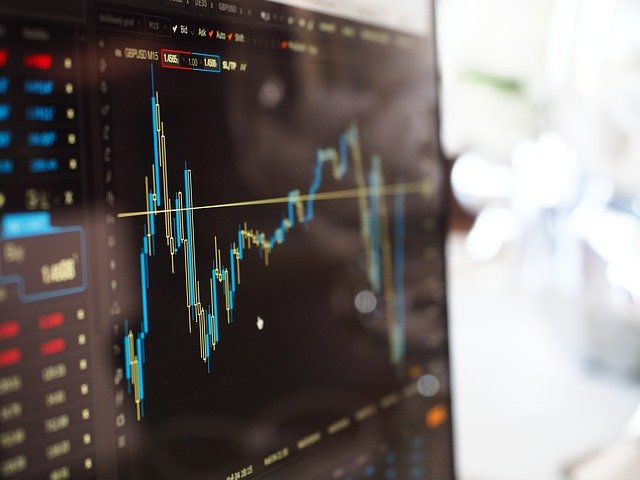
Pixabay.com: Price forecasting
4.Avoiding bounded rationality bias:
A good sound technical analysis can help a trader predict when a trade is going to make profit or when it's going to turn bad. Seeking only to break even in a trade is not a good strategy, as break even never includes the payments for the physical and emotional stress the trader went through during the trade. So, the trader should ask his/her self if the trading decision will make him make more profit, if the answer is no, then staying longer in that trade is worth it, therefore he should close the trade.
5.Avoiding self-attribution bias:-
The earlier one learns to accepts that he contributed to his failure, the earlier he learns from it. Considering our case study, instead of Jane to accept that she has made several wrong decisions along the trade, she is blaming the person that invented "stop loss" for all of her loses. This implies that she haven't taken correction from her failure, thus I won't be surprised if in her next transaction, she decides not to put a "stop loss" in her trade.
Question 4: WHAT TYPE OF ANALYSIS CAN BE USED TO MONITOR MARKET PSYCHOLOGY AND TRADING PSYCHOLOGY, AND WHY? IDENTIFY THE DIFFERENCES BETWEEN TRADING PSYCHOLOGY AND MARKET PSYCHOLOGY.
There are basically three analysis uses in trading: technical, fundamental and sentimental analysis. Among these three analysis, the analysis that can be used to properly monitor both market psychology and trading psychology is technical analysis. This is because technical analysis has tools which can physically show the movement of the market.
Some of the technical analysis tools that can be used in monitoring the Market psychology includes moving average (MA), stochastic RSI, moving average convergence divergence (MACD), relative strength index (RSI).
Just like the market psychology, there are still tools that can be used to monitor a trading Psychology of individuals, one of those tools is the candle stick found in a trade chart. Through the candle stick we can know the psychology of those buying or selling a cryptocurrency, when the chart is on an uptrend, and the candle stick which is blue is longer than the red one, (or there is no red one at all), it indicates that many persons are buying the cryptocurrency, and these singular trades will cumulatively cause the market to rise, but if the reverse is the case, then it implies many are selling off their coins, and soon this individual trade psychology will affect the market psychology.
| Market Psychology | Trading Psychology |
|---|---|
| Market psychology shows a general overview of the mindset of all the traders | Trading Psychology shows the Trading behavior of a single trader or individual. |
| The effect of a market psychology on the general market is gradual, as it takes into considering the varying mindset of several traders | The change in an individual trading psychology is seen immediately the individual makes a trading decisions |
| Market Psychology is a function of several individuals trade psychology | Trading psychology is a function of a traders mindset |
Question 5: HOW CAN YOU MEASURE MARKET PSYCHOLOGY USING A CRYPTO CHART? SELECT 5 TRADING BIASES AND EXPLAIN WITH SCREENSHOTS OF ANY CRYPTOCURRENCY CHART HOW THE BIASES CAN CAUSE A COIN TO BE OVERSOLD AND OVERBOUGHT. (Add watermark of your username)
Basically we have four stages for every trade cycle. Looking at the trade chart one can clearly see the market psychology at each moment, and what trade cycle we are in at that time. To answer this question I will be using the trade chart for LINK/USD shown below to describe what actually happens in a cryptocurrency market at each point.
1.Accumulation Phase:
At this stage, there is little changes in the price of the cryptocurrency, and the market is fairly stable, but is a little bit inclined on the positive side. This shows that the number of people buying the currency is slightly (but not noticeably) equivalent to the number of those selling, thus the cummulative effect of the total individual trades is very small. This is shown below.
2.Uptrend Phase:-
Uptrend Phase indicates that the market is no longer stable, and the number of those buying the coin have greatly superceded the number of those selling the currency. The more the buyers the more the price of the cryptocurrency keeps increasing. This stage is shown in the chart below.
3.Distribution Phase:-
This state looks a bit like the accumulation stage, but it's more inclined to the negative side. Here the number of sellers are slightly greater than the number of buyers. But the difference is not too noticable. Whenever this stage occurs, it normally don't take too long for the Downtrend to begin. This phase is shown in the chart below.
4.Downtrend Phase:
In the Downtrend Phase the number of those selling the coin are much more than those buying the coin. The more the number of sellers keeps increasing, the further down the market goes.
To answer this question I will be using a some trade chart obtained from my trading view to explain how biases can cause a coin to be over bought or oversold. To indicate if a coin is over bought or over sold, I will be making use of the RSI indicator.
1.Herd mentality bias:-
As explained early traders who fall victim of this bias buys or well cryptocurrencies just because of someone's opinion. They don't even engage in a research to know if that trade position is the right one for them or not. We have seen this bias several times this year.
For instance those times Elon musk tweeted in favor of Bitcoin, we saw lots of cryptotrader buy up Bitcoin, their excess buying causes the price of the cryptocurrency rise beyond what is expected and soon the market enter the overbought stage. The chart below shows one of those incidence that Elon musk's tweets caused the Bitcoin to be overbought.
From the screenshot above we can see that in January and late February the prices of Bitcoin is above the 70% in the RSI indicator graph. This means it's over bought.
2.Emotion based Bias:
Whenever traders make trading decisions based on their emotions we say that their trading decisions are emotionally biased. These emotions can be fear or even hope, but which ever, decisions made based on emotions are never good. An instance when the market was over sold as a result of emotional based Bias can be seen on this ETH/USD trade chart.
During the long market crash that lasted all through 2019 into 2020, we saw lots of Ethereum holders sell off their coins, and this was so bad that it caused the general ETH market to enter the over sold zone. This is represented by the RSI indicator as a cross over the 30% area.
3.Disposition Bias
Once several persons keep ignoring the signs of the market and instead keep holding their position just to prove a point, a time will reach when the market will fall below what they can endure, and at that point they will begin to panic sell. This will drive the market into an over sold state.
4.Mental Accounting Bias
This bias occurs when a trader prefers to sell off his coin and the profit it has accrued to solve his personal problem instead of selling the coins that is not yielding him profit. This bias is actually detrimental, as each sell can cause a market to reverse to the negative, and if fear is not taken, the market will fall in to the oversold region.
5.Confirmation bias
Confirmation bias can bring a cryptocurrency market that is in a Downtrend to an uptrend direction, and if the investors keep investing in the coin, it will cause the coin to enter the overbought region.
Question 6: IN YOUR OWN WORDS, DEFINE THE TERM EFFICIENT MARKET HYPOTHESIS (EMH). LIST AND EXPLAIN THE ADVANTAGES AND DISADVANTAGES OF EFFICIENT MARKET HYPOTHESIS (EMH).
Efficient Market Hypothesis in a layman's term states that stocks or cryptos will always trade in all the exchanges at a very fair price which is known to everybody. What this implies is that no investor will be able to buy or sell a stock or crypto at a price which is very different from the general price of the market, as the market price is generally controlled.
Since investors can't buy undervalued stocks or sell their stocks at a price higher than the one of the general market, their only option of making more profit than every other person in the cryptocurrencies market is by engaging in trades that are risker (as we all know, the more the risk, the higher the gains). But before they do that, they need to carry out a risk assessment on the trade.
ADVANTAGES
Higher financial returns
The trader learns how to conduct risk assessment for any Investment opportunity or trade.
DISADVANTAGES
Skills and trainings are required to engage in it.
It's very risky.
The general market psychology is totally influenced by the trading behavior of each trader. Although the influence might be infinitesimal when considered per trader, cummulatively it can be favorable for all, or devastating. Since we now know that this is how the market works, so much effort should be put in other to teach every cryptotrader how to have make sound trading decisions so that we all can keep benefitting from the ever flowing well of cryptocurrency.
Thank you Professor @asaj for the amazing lesson. I learnt a lot from it.
PS: Check out this car article Why Won’t My Windshield Wipers Turn Off – (Causes & Solution) by steadymechanic




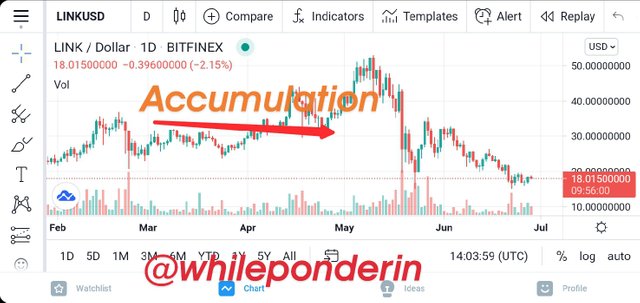
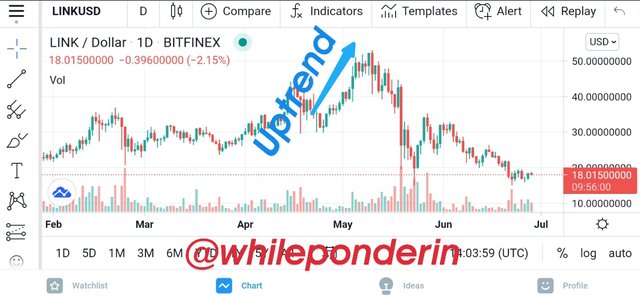
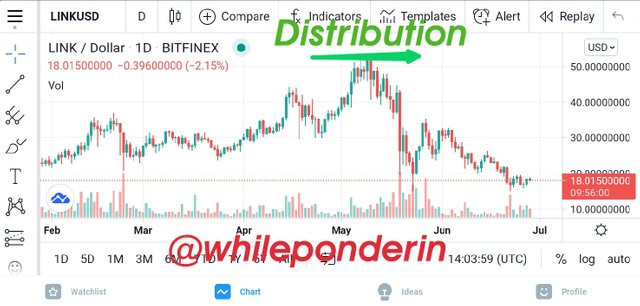
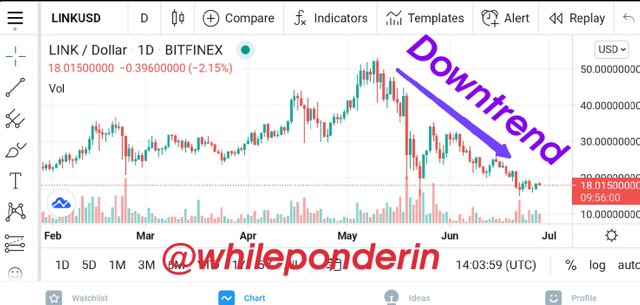
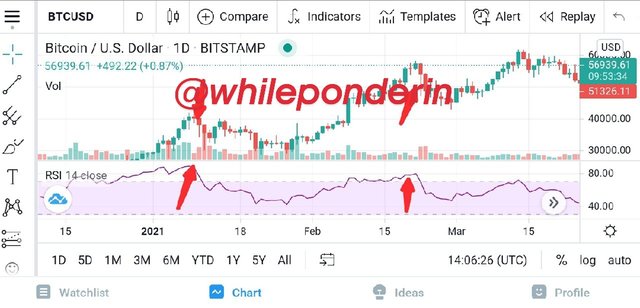
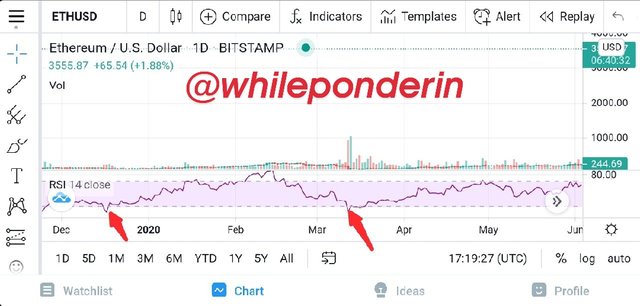
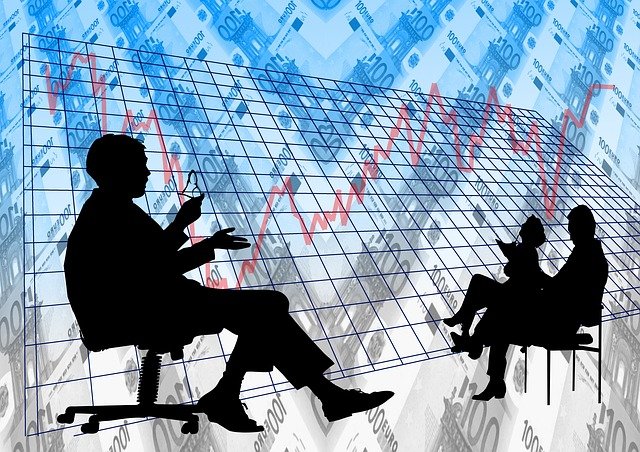
Good job @whileponderin!
Thanks for performing the above task in the second week of Steemit Crypto Academy Season 3. The time and effort put into this work is appreciated. Hence, you have scored 8 out of 10. Here are the details:
Remarks:
You have shown an excellent understanding of the topic and have maintained a consistent level of excellence through your work. I particularly was impressed with your conclusion, explanation of RSI in relation to Bitcoin and Elon Musk, as well as the practical explanation of emh.
However, your definition of trend-chasing and bounded rationality bias isn't accurate. Additionally, you didn't discuss greed and fear index which is an important component when measuring market psychology.
Conclusively, we appreciate your contribution to the academy and we look forward to your posts in the coming weeks.
I will do better in the coming assignments, thanks so much for the corrections professor @asaj.